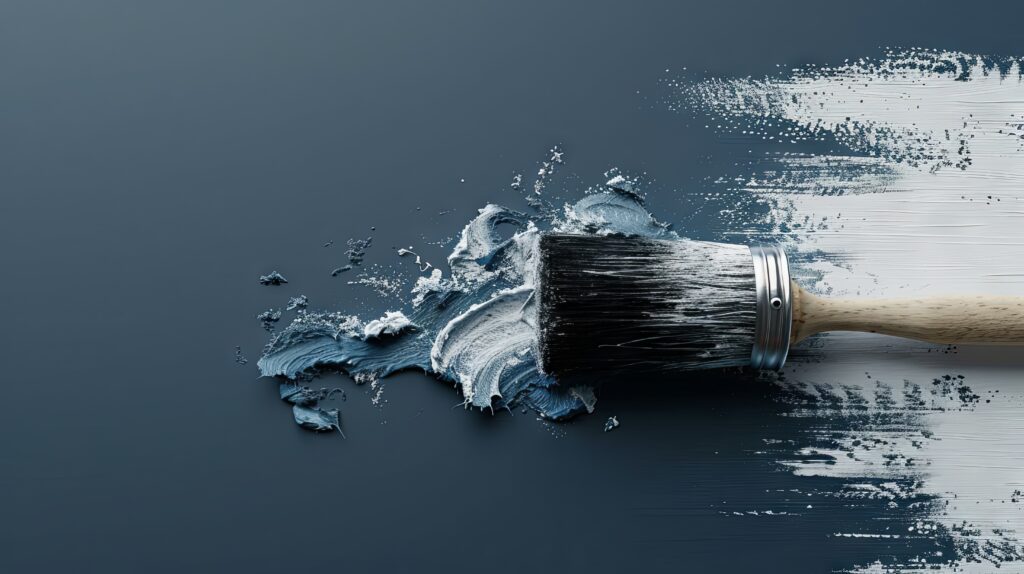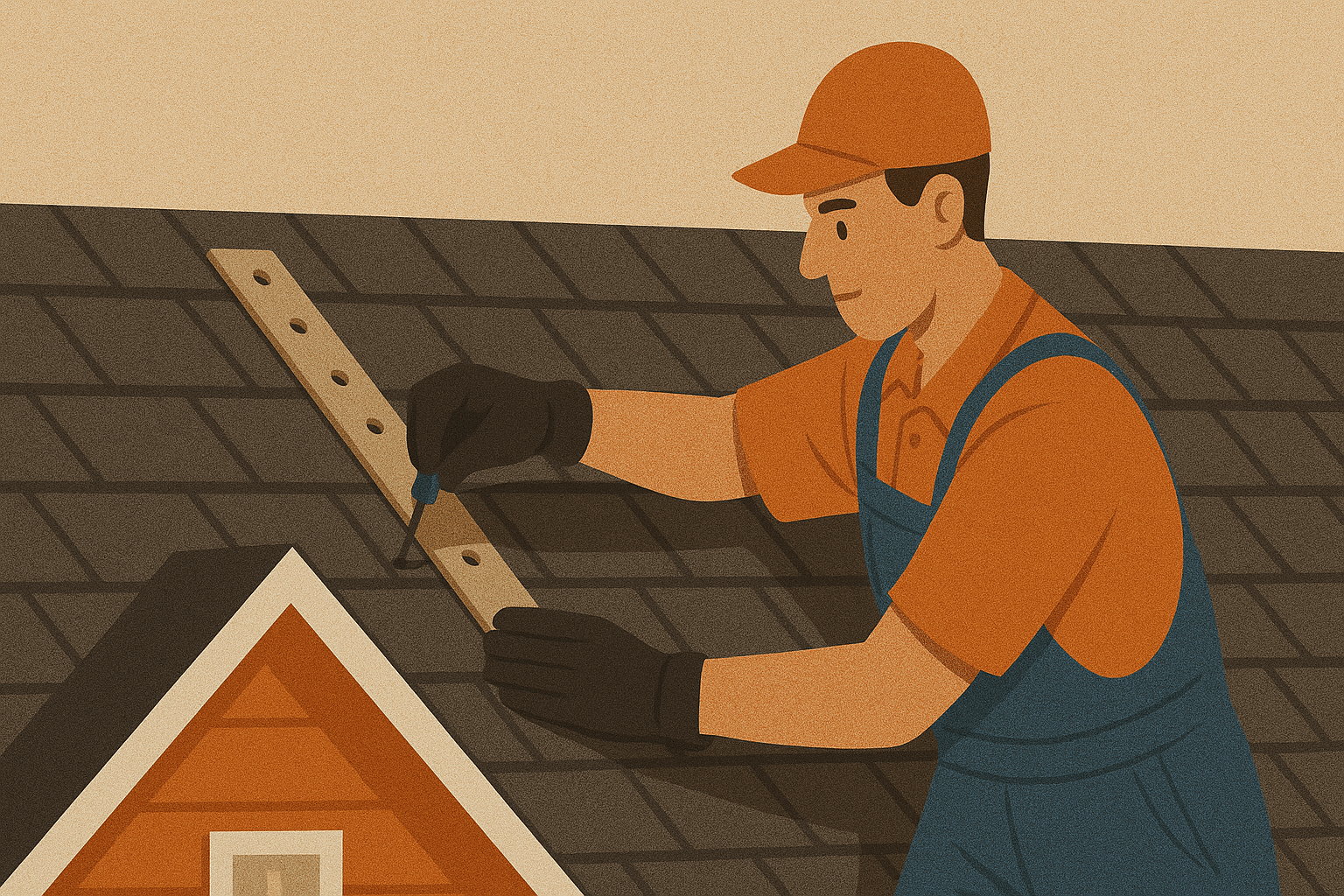A roof is one of the most important elements of any building, serving as the first line of defense against a variety of natural elements. Over time, exposure to harsh weather conditions like sun, rain, wind, hail, and snow can cause wear and tear, leading to problems such as leaks, cracks, and decreased energy efficiency. Without proper maintenance, these issues can escalate, resulting in costly repairs or even premature roof replacement.
Fortunately, roof coatings offer an affordable and highly effective solution to extend the life of your roof. roof coatings act as a protective layer, shielding your roof from damaging weather elements and preventing further deterioration. This additional layer can help seal small cracks, prevent leaks, and protect the roof’s surface from UV rays, moisture, and extreme temperatures.
Not only do roof coatings enhance durability, but they can also improve your building’s energy efficiency. Reflective roof coatings, for example, reduce heat absorption, helping regulate indoor temperatures and reducing your cooling costs during hot months. This can make a significant difference in your utility bills, especially in regions with intense sun exposure.
In this article, we’ll explore the many benefits of roof coatings, the different types available, and how they can significantly impact your building’s longevity and energy efficiency. Whether you’re dealing with a roof showing signs of wear or looking for preventive measures to keep your roof in top shape, roof coatings can offer a cost-effective and sustainable solution.
What Are Roof Coatings?
Roof coatings are a specially formulated layer of protective material applied directly to the surface of an existing roof. This additional layer works to enhance the roof’s durability by creating a strong, weather-resistant barrier between the roofing material and external elements. Whether your roof is exposed to intense UV rays, heavy rainfall, wind, or snow, a roof coating serves as an extra line of defense, preventing common issues such as leaks, cracking, and thermal damage.
One of the key benefits of roof coatings is that they are typically liquid-applied, which allows the coating to penetrate and seal small cracks, gaps, and crevices. This seamless application helps to ensure a uniform protective layer across the entire roof surface, offering superior protection against water infiltration and other damage. This liquid nature also makes it easier to apply roof coatings to complex or irregularly shaped roofs.
Roof coatings come in various formulations, each designed to work with specific types of roofing materials and climate conditions. Some coatings are made for high UV exposure, reflecting sunlight to keep your building cooler, while others are specifically formulated to withstand heavy rains or freezing temperatures. Regardless of the type, roof coatings can drastically reduce the wear and tear that naturally occurs on a roof over time.
For older roofs showing signs of aging and wear, a roof coating can help rejuvenate and extend their lifespan without the need for a costly roof replacement. Even new roofs can benefit from roof coatings, as applying a coating early on can prevent premature damage and ensure the roof performs at its best for years to come. Roof coatings provide property owners with an affordable and effective solution to prolong the life of their roofs and improve overall performance.
Types of Roof Coatings
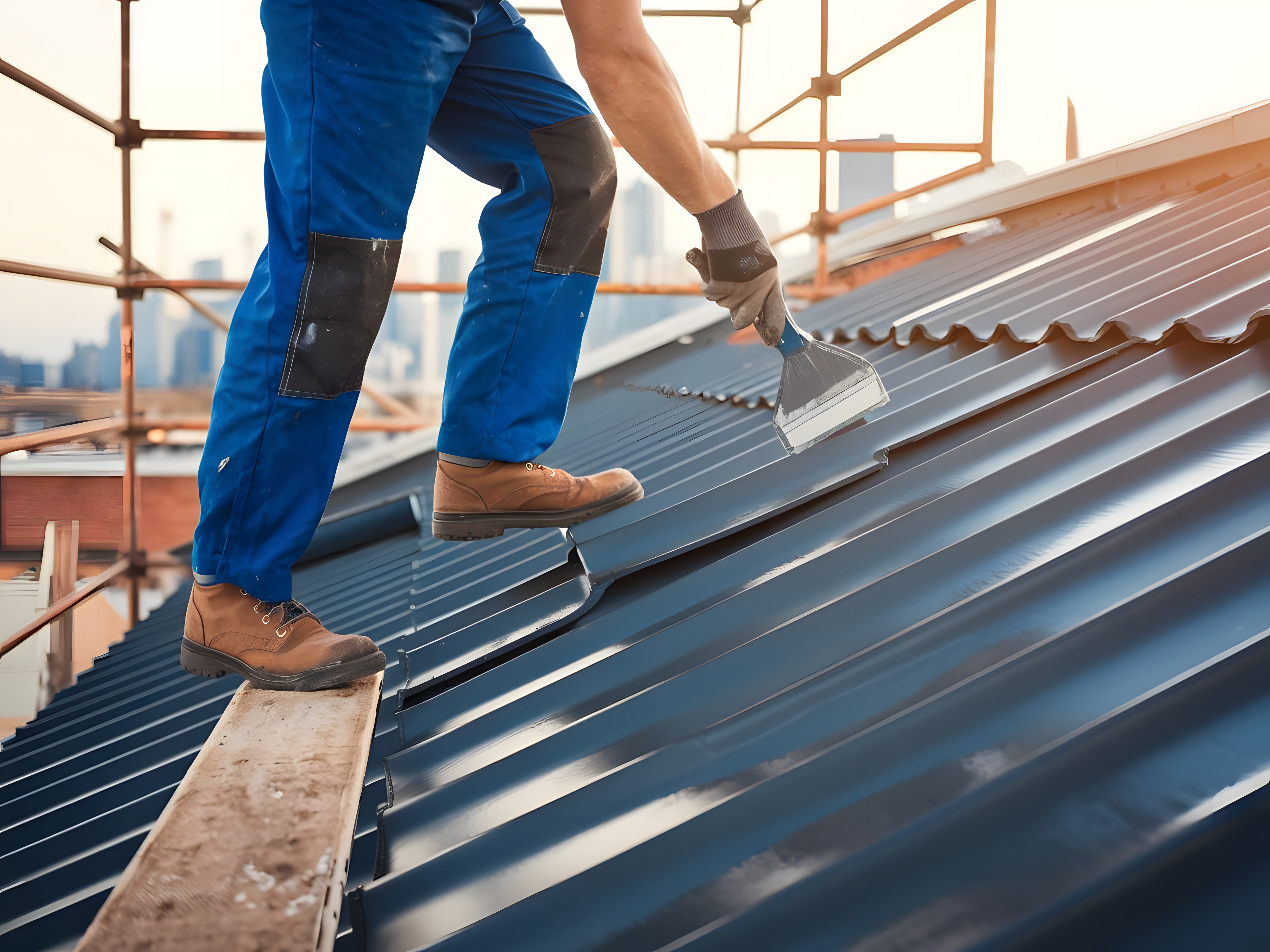
There are several types of roof coatings available, each offering distinct benefits depending on the roof’s material, environment, and specific needs. Choosing the right type of coating can extend your roof’s life, improve energy efficiency, and protect your property from weather-related damage. Below, we explore some of the most popular roof coatings commonly used in both residential and commercial roofing.
Acrylic Roof Coatings
Acrylic roof coatings are water-based and highly reflective, making them an excellent choice for energy efficiency, particularly in warmer climates. These coatings work well in regions that experience high temperatures and plenty of direct sunlight. Acrylic coatings help keep buildings cooler by reflecting sunlight, reducing the amount of heat transferred into the structure. This not only helps lower energy costs but also reduces the strain on cooling systems during the summer months. Additionally, acrylic roof coatings are affordable and easy to apply, making them a popular choice for both residential and commercial properties. However, they are less effective in areas prone to standing water, as prolonged exposure to water can degrade the coating over time.
Silicone Roof Coatings
Silicone roof coatings are ideal for areas with heavy rainfall and high humidity, thanks to their excellent water resistance. One of their biggest advantages is their ability to create a watertight seal on the roof surface, preventing leaks and water damage. Silicone roof coatings are also resistant to mold and mildew growth, which can be a problem in damp environments. Moreover, silicone is highly durable and can endure extreme temperature changes without cracking or peeling, making it suitable for regions with fluctuating climates. While silicone coatings are incredibly effective at protecting against water, they tend to attract dirt, which can reduce their reflectivity over time. Regular maintenance is required to keep the coating performing at its best.
Polyurethane Roof Coatings
Polyurethane roof coatings are known for their strength and impact resistance, making them a top choice for roofs that endure heavy foot traffic, such as those on commercial buildings or in industrial settings. Polyurethane is also highly resistant to weather damage, particularly ponding water, which can be a major concern for flat roofs. This type of roof coating can withstand the harshest conditions, including severe weather, without breaking down or losing its protective properties. While polyurethane roof coatings provide superior durability and protection, they tend to be more expensive than other options, such as acrylic or silicone. The higher upfront cost is often justified by their long-lasting performance and ability to withstand wear and tear.
Asphalt-Based Coatings
Asphalt-based roof coatings are commonly used on commercial roofs, especially those with built-up roofing systems. These coatings provide excellent waterproofing capabilities and are ideal for older roofs that need reinforcement. Asphalt-based coatings offer strong UV protection, helping to reduce the damaging effects of prolonged sun exposure on a roof. While asphalt coatings provide a durable and cost-effective solution, they are not as eco-friendly as other options, as they are made from petroleum-based products. Additionally, they lack the reflectivity of coatings like acrylic or silicone, meaning they may not offer the same energy-saving benefits. However, for roofs in need of a robust, long-lasting solution, asphalt-based coatings remain a reliable option.
Benefits of Roof Coatings
Extending Roof Lifespan
One of the most significant benefits of roof coatings is the ability to extend the lifespan of your roof. Roof coatings serve as an additional protective layer that shields the roofing material from damaging elements like UV radiation, rain, and wind. By reducing the wear and tear caused by environmental exposure, coatings can prolong the life of your roof by several years, delaying the need for a costly roof replacement.
Protection Against Weather Elements
Roof coatings protect against the harsh effects of weather, especially UV rays, rain, wind, and hail. In particular, coatings that offer waterproofing can prevent leaks and moisture buildup, which can lead to mold growth and structural damage over time. This layer of protection also helps roofs maintain their structural integrity, minimizing the risk of cracks, leaks, or other damage caused by fluctuating temperatures.
Energy Efficiency and Cost Savings
Roof coatings, particularly reflective coatings like acrylic or silicone, help reduce energy costs by reflecting the sun’s heat away from your building. This reduces the amount of heat transferred into the building, lowering your need for air conditioning during hot months. The reduced energy consumption also leads to lower utility bills, making roof coatings a great option for improving energy efficiency while saving money.
Environmental Benefits
Roof coatings provide environmental benefits in a couple of ways. First, they reduce the need for a full roof replacement by extending the lifespan of the roof. Second, reflective coatings contribute to energy efficiency, which lowers a building’s overall carbon footprint. In some cases, eco-friendly roof coatings are made from recycled materials, contributing further to sustainable building practices.
Signs That Your Roof Needs Coating
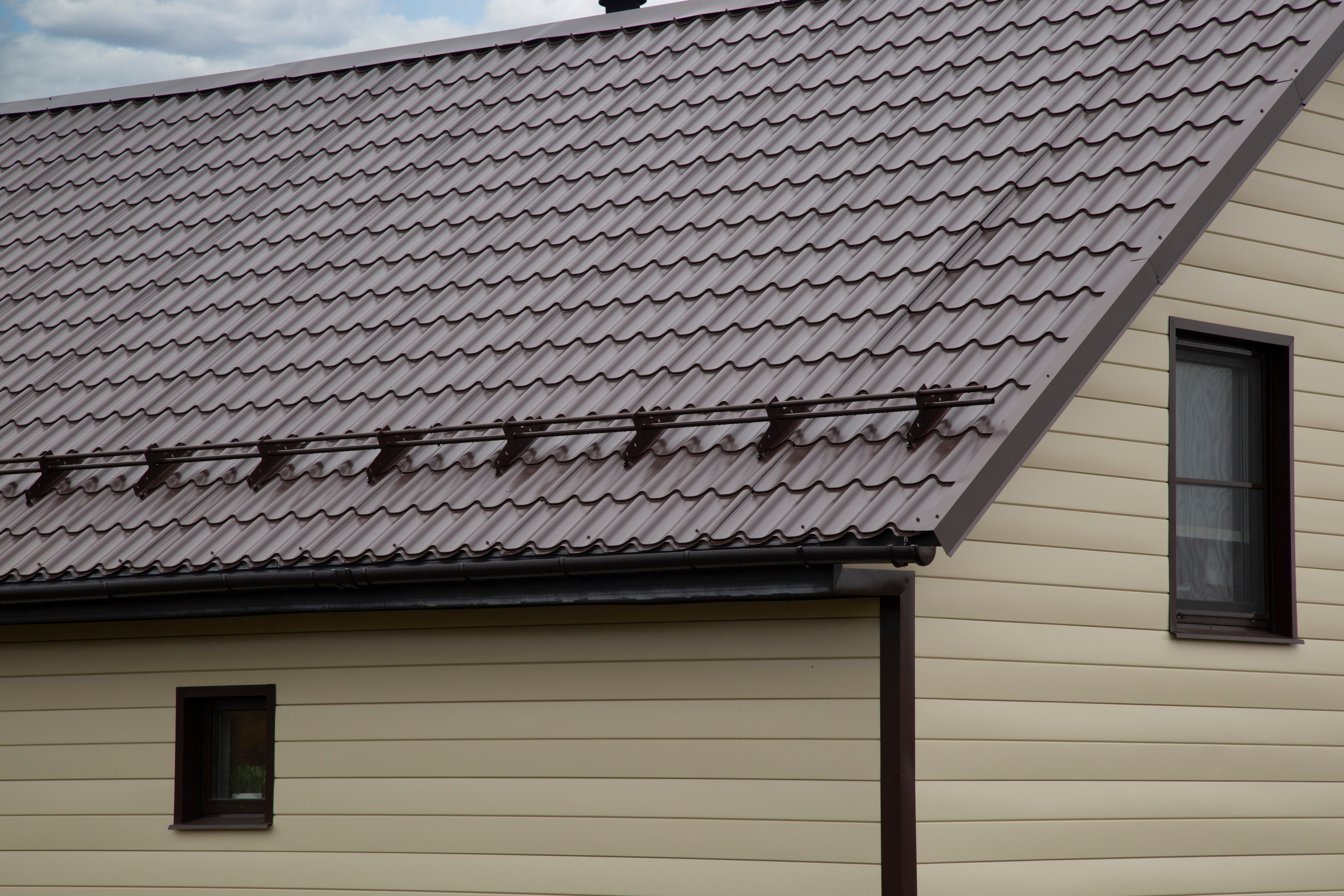
Identifying the signs that your roof needs a coating can prevent future damage and costly repairs. Look out for the following signs:
Cracks and Blisters
One of the early warning signs that your roof may need a coating is the appearance of small cracks or blisters on the roofing surface. These imperfections can occur over time due to exposure to harsh weather conditions like extreme temperatures, wind, and rain. Left untreated, these cracks and blisters can worsen, eventually leading to leaks that may cause water damage to your property’s interior. Applying a roof coating can seal these small cracks and blisters, providing a protective barrier that prevents moisture from seeping in. By addressing these issues early with a roof coating, you can extend the life of your roof and avoid costly repairs down the line.
Ponding Water
If your roof often has areas of standing or “ponding” water after rainstorms, it could signal that your roofing system is struggling to drain water effectively. Ponding water can eventually penetrate the roofing material, leading to mold growth, leaks, and structural damage. Roof coatings, particularly those designed for waterproofing, can help create a watertight seal over your roof, reducing the risk of water damage. These coatings are particularly beneficial for flat or low-slope roofs that tend to accumulate water. By applying a roof coating, you can ensure that your roof remains protected from moisture, even in areas where water tends to pool.
Fading or Discoloration
Over time, exposure to UV rays from the sun can cause your roof’s color to fade or discolor. While this might seem like a cosmetic issue, fading can also indicate that the roof’s materials are becoming brittle and vulnerable to further damage. A high-quality roof coating can not only restore the original color of your roof but also provide additional UV protection. Reflective coatings, in particular, help deflect UV rays, preventing further fading and minimizing the wear and tear caused by prolonged sun exposure. This UV protection can also help keep your building cooler, reducing the heat absorbed by the roof and improving energy efficiency.
Energy Inefficiency
If you’ve noticed that your building’s energy bills are climbing, or if it’s becoming harder to maintain a comfortable indoor temperature, your roof may be contributing to the problem. Roofs that allow excessive heat to transfer into the building can strain your HVAC system, leading to higher cooling costs during hot months. Reflective roof coatings are an excellent solution to this problem, as they are designed to reflect sunlight and reduce heat absorption. By applying a reflective roof coating, you can improve your building’s insulation, keep your indoor spaces cooler, and lower energy costs, all while extending the life of your roof.
Roof Coating Application Process
The roof coating application process is relatively straightforward, but it requires thorough preparation to ensure the coating adheres properly and provides long-lasting protection. Below is a step-by-step overview of the process:
Roof Inspection
The first step in the roof coating application process is a thorough roof inspection. A professional roofer will examine the roof to assess its overall condition and determine whether it is a good candidate for a roof coating. This inspection is essential for identifying any existing issues, such as leaks, cracks, or structural damage, that may need to be addressed before the coating can be applied. Additionally, the roofer will evaluate the type of roofing material to ensure compatibility with the chosen coating. A well-conducted inspection sets the foundation for a successful roof coating application and ensures long-lasting results.
Cleaning
Once the inspection is complete, the next step is cleaning the roof. For the coating to properly adhere to the roof surface, it must be free from dirt, debris, mold, and mildew. Power washing is often used to remove stubborn grime and contaminants, leaving the surface clean and ready for application. Any buildup, like leaves or branches, is cleared away, and areas affected by moss or algae are treated. A clean surface is crucial for ensuring that the roof coating bonds effectively, preventing premature peeling or blistering.
Repairs
Before applying the roof coating, any existing damage must be repaired. Cracks, holes, or areas of deterioration can compromise the effectiveness of the coating if left untreated. This step involves filling in any gaps, patching holes, and fixing weak spots in the roof to create a smooth, even surface for the coating to adhere to. Addressing these issues beforehand ensures that the roof coating can provide full protection, enhancing the roof’s durability and longevity. Skipping this critical step can result in the coating failing to seal properly, leading to continued damage beneath the surface.
Application
After the roof is thoroughly cleaned and any necessary repairs are made, the actual application of the roof coating begins. The coating can be applied using various methods, including brushes, rollers, or sprayers, depending on the size and condition of the roof. For larger roofs, spray application is often preferred to ensure even coverage. In some cases, multiple coats may be applied to achieve optimal protection and durability. The type of coating used—whether acrylic, silicone, or polyurethane—will also dictate how many coats are required and how it should be applied. A smooth, even application is key to ensuring maximum performance and longevity of the roof coating.
Curing
Once the roof coating has been applied, the final step is curing. The coating needs time to fully bond and adhere to the roof surface, creating a protective, seamless barrier. Depending on the type of coating and the weather conditions, the curing process can take anywhere from 24 to 72 hours. During this time, it’s important to avoid foot traffic or exposure to heavy rain, as this can disrupt the curing process. Proper curing is essential to ensure that the coating provides long-lasting protection against UV rays, water infiltration, and other environmental hazards.
DIY vs. Hiring a Professional
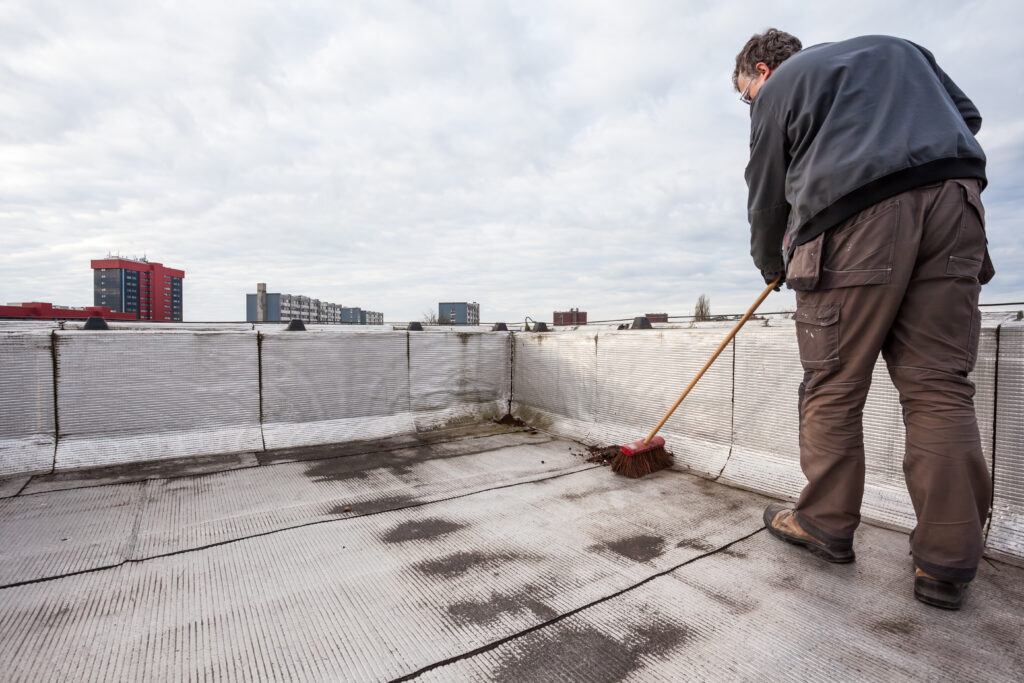
While some homeowners may be tempted to apply a roof coating themselves as a cost-saving measure, it’s generally recommended to hire a professional roofing contractor. Roof coating application requires precision and expertise, and even minor mistakes can compromise the effectiveness of the coating. A licensed contractor brings years of experience to the table, ensuring that the roof is thoroughly inspected, cleaned, and prepared before the coating is applied. This professional approach significantly reduces the risk of improper installation, which can lead to peeling, bubbling, or incomplete coverage.
One of the key advantages of hiring a professional is their ability to spot potential issues that homeowners might miss. A professional roofer knows how to identify underlying problems such as small cracks, leaks, or weak spots that could affect the performance of the coating. These issues may go unnoticed by an untrained eye but can have serious consequences if not addressed before the coating is applied. By resolving these problems first, professionals ensure that the roof coating provides maximum protection and extends the lifespan of the roof.
Additionally, roofing contractors have access to specialized tools and equipment that make the coating process more efficient and effective. For larger or more complex roofs, professional-grade sprayers and applicators ensure even coverage across the entire surface. This precision application is difficult to achieve with basic DIY tools, especially on larger commercial roofs or roofs with difficult-to-reach areas. By hiring a professional, homeowners can have peace of mind knowing that the job will be done right the first time.
Another benefit of hiring a licensed contractor is the warranty coverage that often comes with professional installation. Most roofing companies offer warranties on both materials and workmanship, providing added protection for homeowners. If any issues arise after the coating is applied, a contractor’s warranty ensures that the necessary repairs will be covered. This level of assurance is not available with DIY projects, leaving homeowners vulnerable to costly mistakes and future repairs.
How Roof Coatings Impact Different Roofing Materials
Not all roofing materials are suitable for every type of roof coating. It’s essential to choose a roof coating that complements your roof’s material:
Asphalt Shingles
Although asphalt shingles don’t typically require coatings, applying an acrylic or silicone roof coating can provide additional protection. These coatings offer UV resistance, which helps prevent the shingles from becoming brittle due to prolonged sun exposure. Additionally, a roof coating can add a layer of water resistance, protecting against moisture infiltration that may cause leaks over time. While not all homeowners choose to coat their asphalt roofs, applying a coating can extend the roof’s lifespan, especially in areas with harsh weather conditions or extreme sunlight.
Metal Roofs
Metal roofs benefit significantly from roof coatings, particularly silicone or polyurethane options. Metal roofing is prone to rust over time, especially in regions with high humidity or frequent rainfall. Silicone coatings provide an excellent waterproof barrier, preventing rust and corrosion from forming. Polyurethane coatings, known for their durability, offer superior protection against impact damage and wear from environmental elements. By adding a protective coating, metal roofs not only last longer but also retain their aesthetic appeal, preventing the dulling or corrosion that can occur without protection.
Flat Roofs
Flat roofs are one of the most challenging roof types when it comes to preventing water damage. Because they don’t have the natural slope that allows water to drain, flat roofs are particularly susceptible to ponding water, which can cause leaks and structural damage over time. Silicone and polyurethane coatings are ideal for flat roofs because they create a seamless, waterproof barrier that prevents water from penetrating the roof’s surface. These coatings are also flexible and can handle temperature fluctuations without cracking, making them a durable option for flat roofs in all climates.
Tile Roofs
Tile roofs, often seen on Mediterranean or Spanish-style homes, can benefit from coatings that add an extra layer of waterproofing. However, it’s important to choose a roof coating that allows the tiles to “breathe,” meaning it doesn’t trap moisture underneath the tiles. Trapped moisture can lead to mold growth, which may eventually damage the roof structure. Acrylic coatings, in particular, can provide the desired level of waterproofing without compromising the roof’s ability to release moisture. Additionally, these coatings can restore the vibrant colors of the tiles, enhancing the overall aesthetic appeal of the roof.
Long-Term Cost Benefits of Roof Coatings
While roof coatings require an initial investment, they offer considerable long-term financial benefits that make them a smart choice for both homeowners and businesses. One of the most significant advantages of applying a roof coating is its ability to extend the lifespan of your roof. By adding a protective layer that shields the roof from harsh weather conditions, UV rays, and water damage, roof coatings can help prevent the deterioration that typically leads to expensive repairs or a full roof replacement. This extended life expectancy means fewer repairs and replacements over time, saving you thousands of dollars.
In addition to prolonging your roof’s lifespan, roof coatings play a crucial role in preventing costly repairs. Minor cracks, leaks, or surface damage that are left unaddressed can quickly escalate into more serious structural problems, resulting in higher repair costs. A roof coating acts as a preventive measure, sealing these small issues before they become major concerns. By creating a watertight barrier and protecting your roof from the elements, coatings help avoid the kind of damage that could lead to leaks, mold growth, or interior water damage—all of which can be expensive to repair.
Another major benefit of roof coatings is their ability to improve energy efficiency. Many roof coatings, especially reflective ones like acrylic or silicone, are designed to reflect sunlight and reduce heat absorption. This reduces the amount of heat that enters your home or building, helping maintain cooler indoor temperatures and lowering your reliance on air conditioning. Over time, this energy efficiency can lead to substantial savings on energy bills, especially in warmer climates. For businesses with large commercial buildings, these savings can add up quickly, making roof coatings a cost-effective solution for managing energy expenses.
Finally, when you compare the cost of a roof coating to the cost of replacing an entire roof, the savings become even more apparent. Roof replacement is a significant expense, often requiring extensive labor, materials, and downtime for both residential and commercial properties. In contrast, roof coatings can be applied at a fraction of the cost and with minimal disruption to your daily operations. By opting for a roof coating, you can enjoy the same benefits of a new roof—without the hefty price tag associated with a complete replacement.
How Often Should You Reapply Roof Coatings?
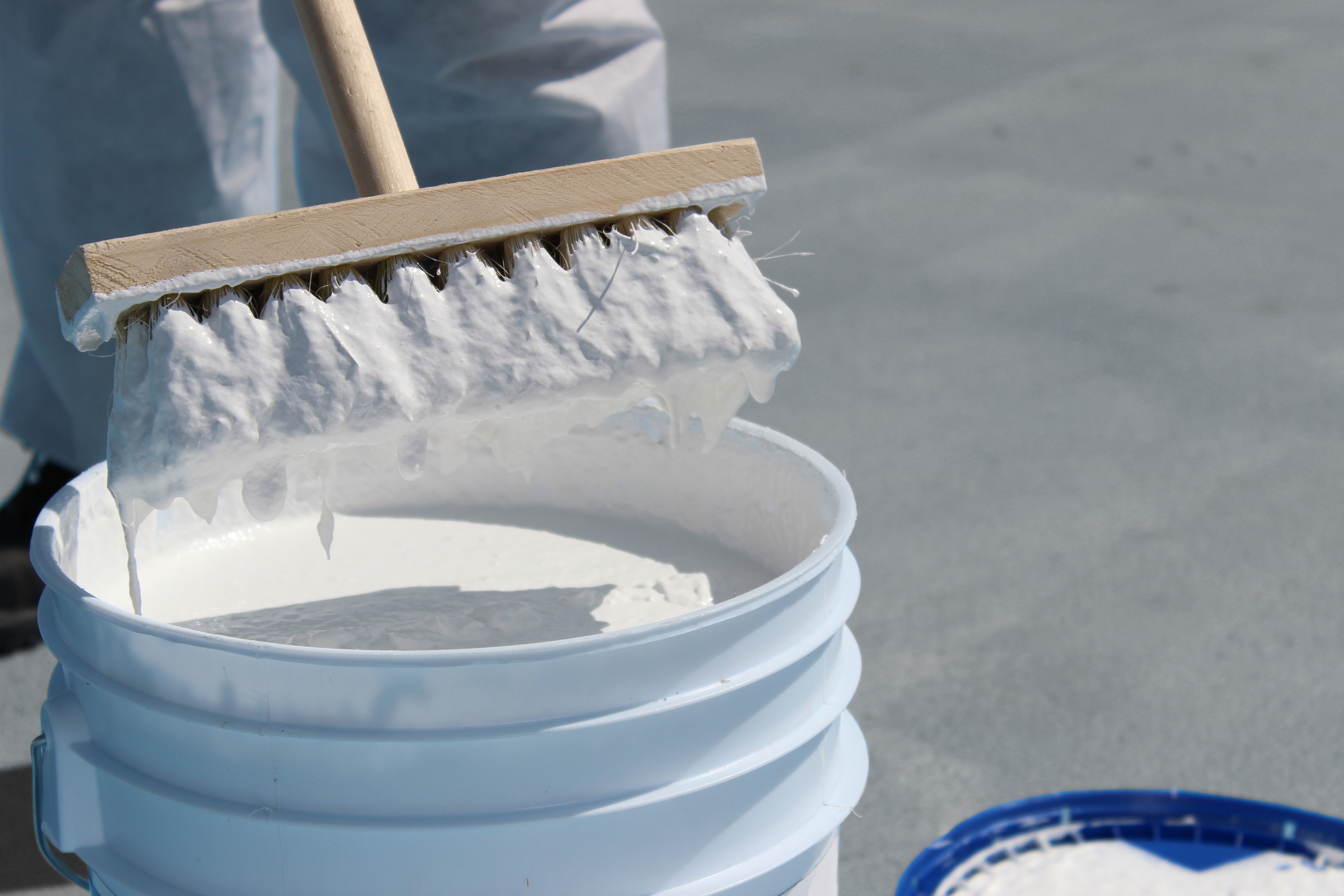
The longevity of a roof coating largely depends on the type of coating used and the specific environmental conditions the roof is exposed to over time. Different roof coatings have varying lifespans, with some needing to be reapplied more frequently than others. For instance, acrylic and silicone coatings typically last between 10 and 15 years before they need to be reapplied. These coatings are known for their UV resistance and reflectivity, making them ideal for roofs exposed to a lot of sunlight. However, in areas with more severe weather conditions, such as heavy rainfall or hail, the coating may wear down faster, requiring more frequent maintenance.
Polyurethane coatings, on the other hand, tend to last longer due to their superior durability and resistance to impact. These coatings are especially effective on roofs that experience heavy foot traffic or are exposed to harsh weather conditions. While they come at a higher upfront cost, polyurethane coatings often provide a longer lifespan, making them a more economical choice for properties that require long-term protection. In many cases, they may last over 15 years before reapplication is needed, especially when properly maintained.
Another key factor in determining how often roof coatings need to be reapplied is the roof’s exposure to weather elements. Roofs in regions with extreme weather conditions—such as frequent storms, high winds, or extreme heat—may see faster degradation of the coating. In such cases, it’s essential to keep an eye on the roof’s condition and schedule regular inspections to catch any signs of wear or damage early on. By addressing small issues promptly, you can prevent the need for a complete reapplication sooner than necessary.
To ensure that your roof coating is performing at its best and lasts as long as possible, it’s highly recommended to schedule periodic professional roofing inspections. Roofing professionals can assess the condition of the coating, check for signs of wear or damage, and determine when it’s time to reapply the coating. They will also consider factors such as the age of the coating, the specific material used, and how well it has held up against environmental factors. By following expert advice, you can extend the lifespan of your roof coating and protect your property effectively.
Conclusion
Roof coatings provide a practical and cost-effective solution for property owners looking to extend the life of their roofs while protecting them from the damaging effects of the elements. Over time, roofs are subjected to harsh weather conditions like UV rays, rain, wind, and temperature fluctuations, which can cause wear and tear. By applying a roof coating, you create a durable protective barrier that shields your roof from these stressors, significantly prolonging its lifespan. This means fewer repairs and replacements over time, helping you save money on maintenance and ensuring your roof continues to perform well for years to come.
One of the key advantages of roof coatings is their ability to improve energy efficiency. Many roof coatings, such as acrylic and silicone, are designed to reflect sunlight, reducing the amount of heat absorbed by your building. This reflective property keeps your home or commercial space cooler during hot months, lowering the demand on your air conditioning system and resulting in reduced energy bills. Over time, these energy savings can add up, making roof coatings not only a protective measure but also a smart investment for energy-conscious property owners.
In addition to improving energy efficiency, roof coatings offer enhanced protection against the elements. Whether you’re dealing with frequent rainfall, snow, or extreme sunlight, roof coatings create a waterproof, weather-resistant barrier that prevents water leaks, mold growth, and structural damage. This is especially important for commercial properties, where the cost of repairing large roofing systems can be significant. By investing in a high-quality roof coating, you safeguard your property from the risks of storm damage and other weather-related issues, ensuring long-term durability and peace of mind.
For homeowners, roof coatings can also enhance the aesthetic appeal of the roof by restoring its color and appearance. Over time, roofs can fade or discolor due to prolonged exposure to the sun, but a roof coating can bring back its original look while providing additional protection. Furthermore, roof coatings are a versatile option that can be applied to a variety of roofing materials, including metal, asphalt shingles, and flat roofs. This makes them a viable solution for both residential and commercial properties, offering flexibility in terms of roof type and building style.
If you’re considering a roof coating, it’s essential to consult with a professional roofing contractor to assess your specific needs. A professional can evaluate the condition of your roof, recommend the best type of coating for your property, and ensure the coating is applied correctly for maximum effectiveness. By working with an expert, you can rest assured that your roof is in good hands and that you’re making a smart investment in its longevity. Protect your property from the elements and enjoy the financial benefits of roof coatings by contacting a professional roofing service today.

